The following image is an example of a request schema for a constructor.
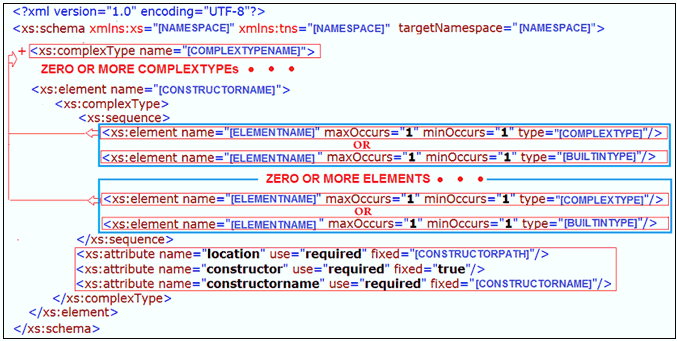
The following image is an example of a response schema for a constructor.
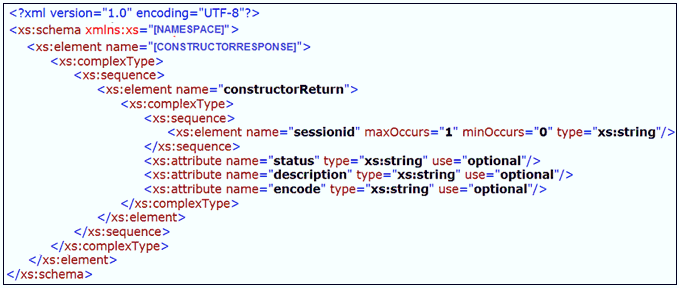
In this section: |
Every method and constructor has specific XML request and response schemas. A constructor item will be displayed under an Assembly node within the hierarchy of iWay Explorer only if users enable the cache for that Assembly. In order to allow users to reuse the object on which to invoke a method, a new string data type called sessionid is defined in the schemas that are generated in iWay Explorer. This identifies a unique object. When users want to execute a method of an instance of a class, they can either pass the information of a constructor through a schema to create a new instance or pass a sessionid through schema to reuse a previously created instance for the class. For a cacheable Assembly, a sessionid is returned in a response from a constructor request or method request.
The following image is an example of a request schema for a constructor.

The following image is an example of a response schema for a constructor.

The following image is an example of a request schema for a method.
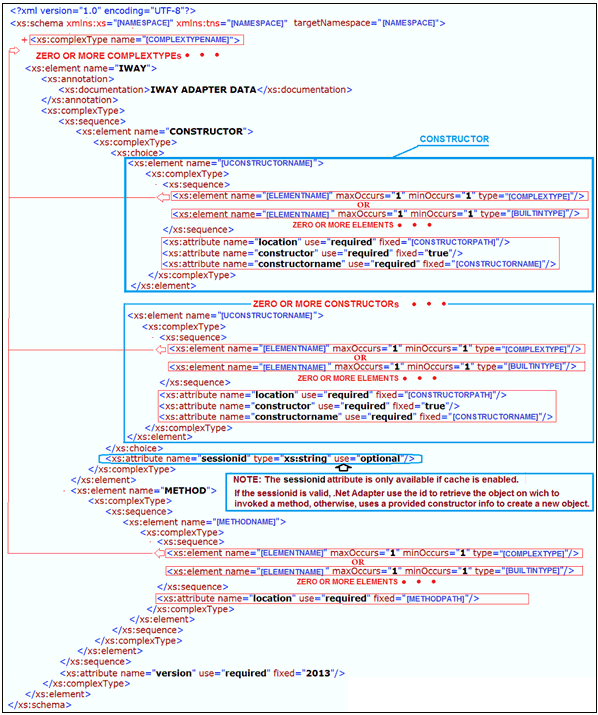
The following image is an example of a response schema for a method.
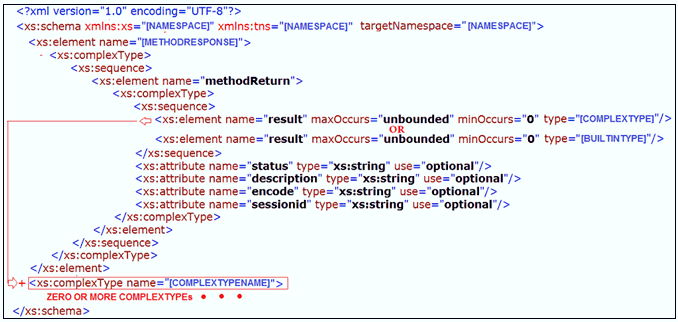
In the XML request and response schemas for constructors and methods provided in this example:
Is the name of a namespace.
Is the name of a complex type.
Is the name of a constructor of a class.
Is the name of an argument of a constructor or a name of a parameter of a method.
Is a complex type, which is equal to:
"tns:" + [COMPLEXTYPENAME]
Is the name of a built-in data type.
Is a built-in data type, which is equal to:
"xs:" + [BUILTINTYPENAME]
Is the location of an Assembly.
Is the signature of a method. This is a combination of the name of the method and the number and types of parameters (and their order).
Is the signature of a constructor. This is a combination of the name of the constructor and the number and types of arguments (and their order).
Is the combination of the namespace of the class along with the period character (.) and the name of the class.
Is the following:
[ASSEMBLYPATH]/[FULLCLASSNAME]/[CONSTRUCTORSIGNATURE]
Is the following:
[ASSEMBLYPATH]/[FULLCLASSNAME]/[METHODSIGNATURE]
Is the combination of a name of a constructor along with the string Response.
Is the combination of a name of a method along with the string Response.
Is a unique name of an identified onstructor of a class.
If a class only contains one constructor, then:
[UCONSTRUCTORNAME]=[CONSTRUCTORNAME]
If a class contains multiple constructors, then:
[UCONSTRUCTORNAME]=[CONSTRUCTORNAME]+"_"+string of a positive number
Is the name of a method.
The following fragment represents a node of a complex type:
"+<xs:complexType name="[COMPLEXTYPENAME]">
You can expand nodes based on different complex types of nodes, as shown in the schema fragments in this section.
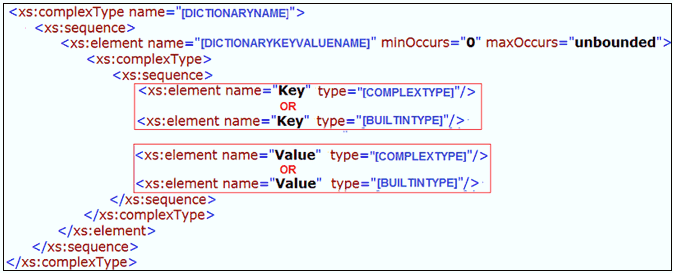
Is the name of dictionary, which is the combination of the string ArrayOfKeyValueOf along with [DICTIONARYKEYVALUENAME].
Is the data, which is the combination of the string of key type along with the string of value type.

Is the name of an array, which is the combination of the string ArrayOf along with the string of a data type.
| iWay Software |